Is Meta Ray-Ban Display the smart augmented reality glasses we’ve been waiting for? In this detailed Meta Ray-Ban Display review, I’ll go over all of the features and quirks in these glasses that you should know before buying yourself a pair!
Keep reading because my opinion on these glasses changed after using them for myself.
Meta Ray-Ban Display Overview

Meta unveiled the Meta Ray-Ban Display glasses at Meta Connect on September 17, 2025, marking the next step in its wearable AI lineup. As one of the first AI Glasses available on the market, the Meta Ray-Ban Display combines stylish Ray-Ban frames with advanced AI controls and a built-in display.
These are the first Ray-Ban glasses to feature a built-in display in the right lens, showing you tons of cool information right in your vision:
- test messages
- images
- navigation prompts
- video calls
With the new developer kit, we should see a ton of new apps for AR smart glasses come out.
The Meta Ray-Ban Display glasses feature a new Neural Wristband, a significant technical achievement due to the challenge of accurately detecting muscle signals using subtle hand movements. The package includes six hours of battery life and a collapsible charging case to extend usage throughout the day.
How to Buy
The easiest way to buy the Meta Ray-Ban Display is through the official Meta website here.
Most of Meta’s other products and accessories are available on Amazon. As soon as these AR smart glasses are available on there, we will let you know.
Summary of Key Features
- Monocular Micro-Display: Full color display and high resolution display (600×600 resolution, ~20° field of view), positioned as an in-lens display and glasses display in the right lens only. This private in-lens display is visible only to the wearer and nearly invisible to bystanders, blending digital information in plain sight. The display can show visual responses, conversations appear for translations, and a visual map for walking directions and turn-by-turn directions, enabling phone-free navigation.
- Brightness: Up to 5,000 nits for optimal outdoor visibility; the display automatically adjusts brightness for optimal viewing.
- Neural Wristband Input: Utilizes EMG signals to recognize subtle hand movements, fine finger movements, and muscle activity, measuring movement and interpreting natural signals and those generated by muscle activity to create commands. It also enables users to scroll through their content silently.
- Camera: 12 MP with live display preview for framing shots and video capture.
- Audio: Open-ear speakers with multiple microphones for calls, voice commands, and Meta AI interaction. Users can activate Meta AI with the ‘hey meta’ voice command.
- AI Features: Supports Meta AI, notifications overlay, live captions, real-time translation, and displays text and multimedia messages, enabling two-way video calls.
- Battery: Mixed-use battery life with up to six hours of use.
- Privacy Design: Display is nearly invisible to bystanders, with no light leakage.
- Comfort: Slightly heavier than standard sunglasses, but wearable for moderate sessions.
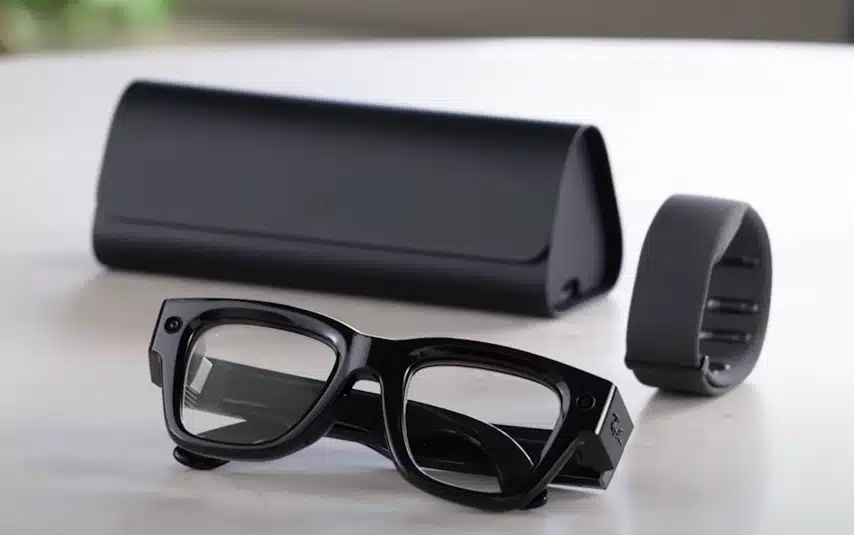
Models and Pricing
There is only one model of the Meta Ray-Ban Display glasses, with various lens options to choose from. You can choose between Black and Sand colors, and they also support prescription lenses.
The Meta Ray-Ban Display glasses were released to the public on September 30th, 2025, in the US, with expansion to the rest of the world coming in early 2026. The Display glasses are $799 USD, which includes the AI Glasses along with the Meta Neural Band.
Meta Ray-Ban Display: Design and Build Quality
The Meta Ray-Ban Display AI Glasses maintain the classic Ray-Ban look, with a design that closely resembles the iconic Wayfarer style. At a glance, they appear to be fashionable sunglasses, but a closer inspection reveals slightly thicker temples to accommodate the added technology. The extra bulk is noticeable compared to standard Ray-Bans but not excessive, striking a balance between style and functionality.
The frames feel sturdy, thanks to a premium hinge mechanism that enhances their durability. While the added weight can be felt during longer wear sessions, the overall build quality gives a sense of refinement, and the glasses still carry the craftsmanship expected from Ray-Ban eyewear.
Meta has used some of their knowledge on their virtual reality headsets like the Meta Quest 3s and Quest 3 to make the display high quality.
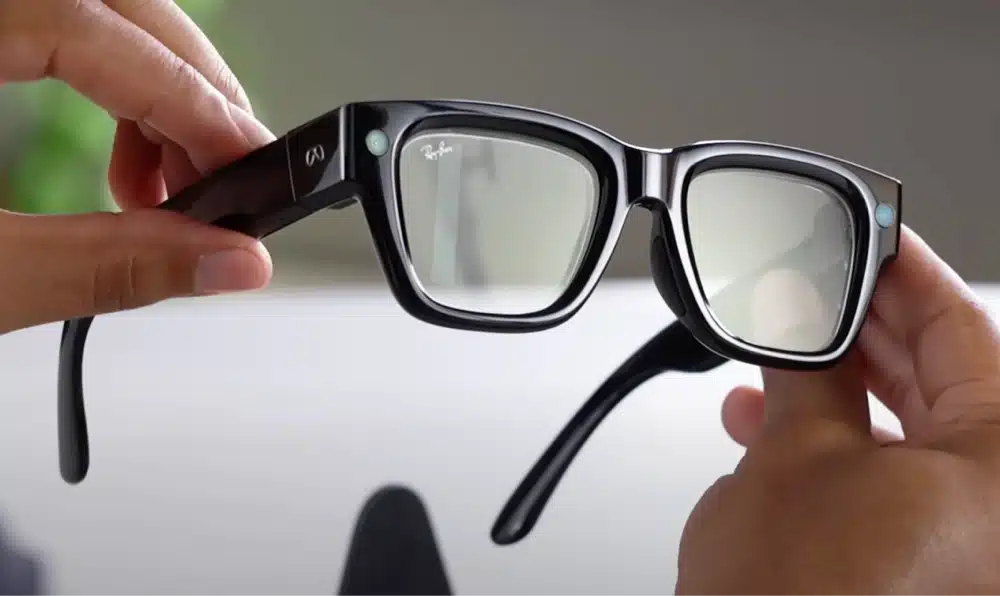
Meta Ray-Ban Display’s Display
The Meta Ray-Ban Display introduces a compact micro-display embedded in the right lens, delivering a resolution of 600×600 pixels with a field of view of around 20 degrees. It appears as a small floating screen in the wearer’s peripheral vision, designed to show notifications, camera previews, AI interactions, and other quick-glance information.
Brightness levels reach up to 5,000 nits, ensuring visibility even in direct sunlight, while the optics maintain sharp and legible content without significantly obstructing natural vision. Importantly, the display is virtually invisible to bystanders, making it a discreet addition that blends digital information into everyday use.
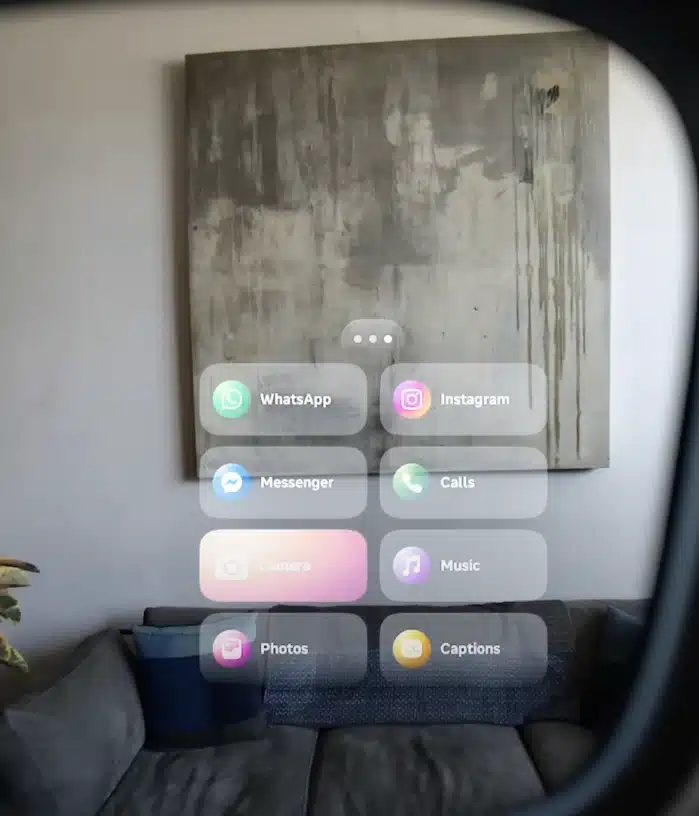
Controls and Interaction
The Meta Ray-Ban Display utilizes a combination of touch, voice, and gesture-based inputs to establish a flexible control system. Built-in touch panels on the temples allow for quick adjustments, such as volume, playback, or answering calls, while voice commands trigger Meta AI for hands-free assistance.
The standout feature is the Neural Wristband, which utilizes EMG technology to detect subtle hand and finger movements, allowing for discreet gestures such as scrolling or selecting without requiring the user to reach for the glasses. This approach makes each interaction feel natural, whether in quiet environments where voice control is particularly effective or in public spaces where gestures and touch offer more discretion. I was very impressed with how well the glasses reacted to my gestures.

Audio Summary
Audio on the Meta Ray-Ban Display is handled through discreet open-ear speakers built into the arms of the frames, allowing users to hear music, calls, and AI responses without blocking ambient sound. The speakers deliver clear audio at close range, keeping playback relatively private while still letting in surrounding noise for safety and awareness.
The audio is fairly crisp for wearable AI glasses, enabling clear voice capture for calls and commands, even in moderately noisy environments. The downside is that because they are open-ear speakers, others around you are more likely to hear what is playing through the glasses.
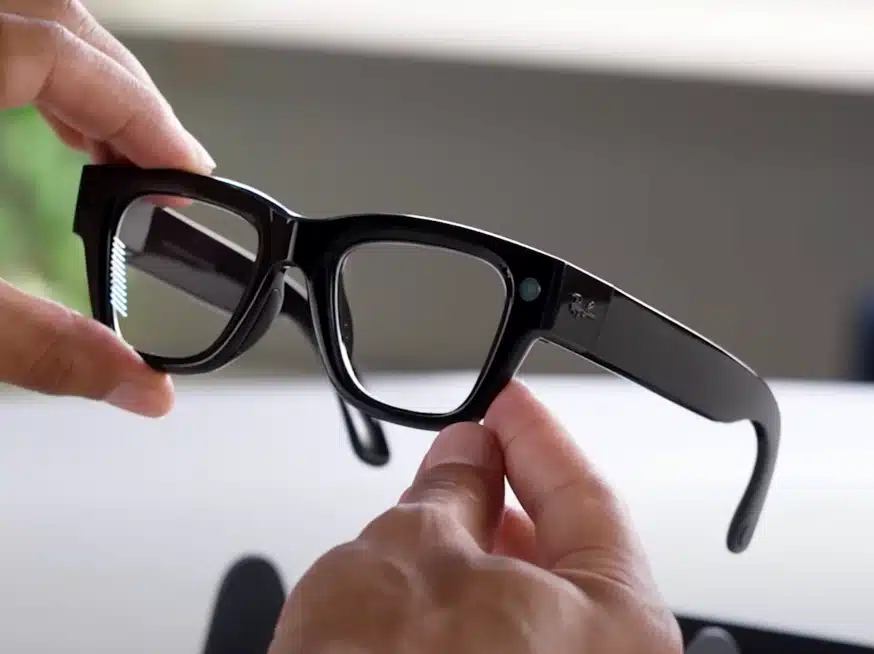
Camera
The Meta Ray-Ban Display is equipped with a 12-megapixel front-facing camera, allowing users to capture photos and video directly from the wearer’s point of view. A key improvement over previous Ray-Ban Meta glasses is the addition of a live viewfinder within the display, allowing users to properly frame shots and ensure better composition before capturing.
Image quality is solid for casual use, with sharp detail and decent performance in good lighting, though it doesn’t match the dynamic range of a dedicated smartphone camera. Still, the convenience of hands-free capture and real-time preview makes the camera one of the most practical features of these smart glasses.

Battery Life and Charging
The Meta Ray-Ban Display offers a battery life designed for everyday, moderate use, typically lasting around three to four hours with active display features, audio, and camera usage. For lighter sessions that rely more on audio and notifications, the glasses can stretch closer to a full day.
Charging is handled through a compact USB-C charging case, which not only protects the glasses but also provides on-the-go top-ups. While the endurance won’t replace all-day wear for power users, the case-based charging system makes it easy to keep the glasses ready for use between charges.
How Practical Are The Meta Ray-Ban Display Glasses?
In day-to-day use, the Meta Ray-Ban Display glasses strike an outstanding balance between futuristic and real-world functionality. The display is best suited for quick-glance information, such as notifications, rather than extended viewing or complex tasks. By reducing distractions and enabling quick, unobtrusive interactions, these glasses help users stay present and engaged with their surroundings.
The neural wristband makes interactions more discreet and intuitive, while the open-ear audio and integrated camera add convenience without making the glasses feel overly gadget-heavy.
However, the limited battery life and the learning curve of adjusting to the display mean they’re not a complete replacement for a phone or AR headset. Instead, they shine as a separate on-the-go companion that may enhance your daily routines with subtle innovative features while still looking like a stylish pair of sunglasses.
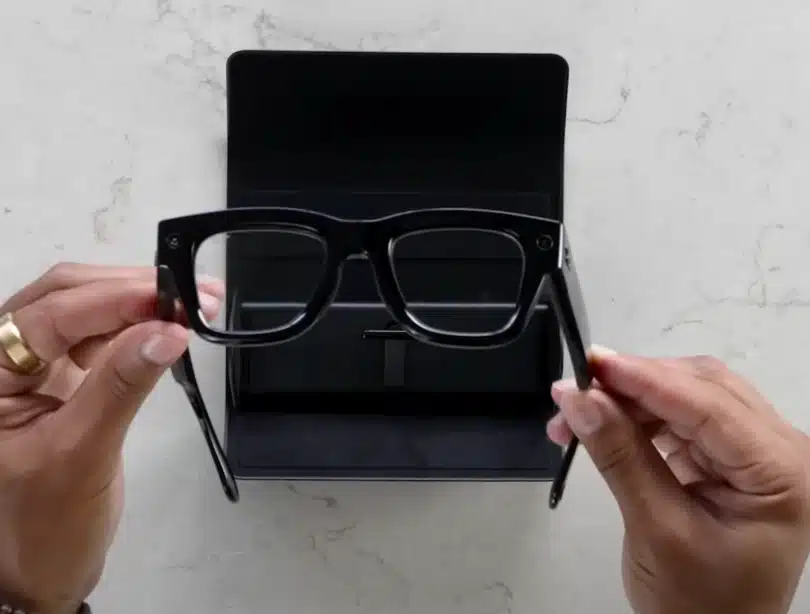
Should You Buy These Smart Glasses?
The Meta Ray-Ban Display augmented reality glasses are worth considering if you value hands-free notifications, camera previews, and glanceable AI features in a stylish, discreet design. Early users and tech enthusiasts will appreciate the neural wristband gestures, open-ear audio, and integrated camera, which make everyday tasks more convenient.
However, the glasses do have limitations: battery life is limited with heavy use, the display is monocular, and the frames are noticeably heavier than standard sunglasses. At $799, the price is premium, so casual users who primarily rely on a phone may find these benefits less compelling.
Overall, these are the best wearable technology today. However, I think they are more suited for those who want a functional, fashion-forward smart eyewear experience and can tolerate minor trade-offs. I’d like to see more AI enabled features in the future to really make these glasses stand out.


